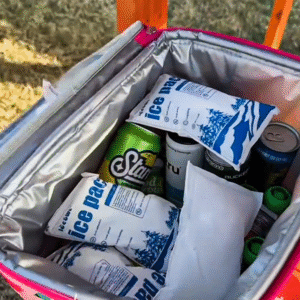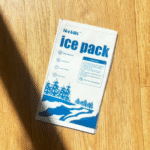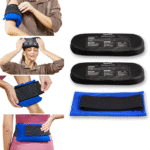In der Kaltkette -Logistikindustrie, maintaining the required temperature for sensitive goods like pharmaceuticals, Meeresfrüchte, and meats is essential for ensuring product safety. Dry ice bricks and pack sheets are two effective cooling solutions widely used to achieve this. Understanding the differences between these options can help businesses select the right solution for their needs.

-
What are the differences between dry ice bricks and pack sheets?
-
How do dry ice bricks and pack sheets maintain temperature during shipping?
-
Which option is best for different shipping durations and temperatures?
What Are Dry Ice Bricks and Pack Sheets?
Trockeneissteine
Dry ice bricks are solid blocks of carbon dioxide that sublimate at -78.5°C, providing a concentrated and long-lasting cooling source. These bricks are ideal for long-duration shipments, such as frozen foods or biological samples that require sustained, Ultra-niedrige Temperaturen.
Trockeneisbeutelblätter
Dry ice pack sheets are flexible panels filled with small pellets of dry ice. These are often used for shorter shipments or for packaging products that require chilled, rather than frozen, Temperaturen. Their flexibility allows them to conform to various package shapes, offering efficient cooling for goods such as cosmetics or pharmaceuticals.
How Do Dry Ice Bricks and Pack Sheets Perform in the Cold Chain?
Both dry ice bricks and pack sheets work by sublimating, a process where solid CO2 transitions directly to gas, absorbing heat and cooling the surrounding environment. The key differences between these forms lie in their cooling duration and flexibility.
| Besonderheit | Trockeneissteine | Trockeneisbeutelblätter |
|---|---|---|
| Kühldauer | 72–120 hours | 24–48 Stunden |
| Flexibilität | Starr, less adaptable | Flexibel, conforms to shapes |
| Kühltyp | Ultra-frozen | Gekühlt (2° C - 8 ° C.) |
| Ideal Applications | Long-duration shipments | Kurze bis mittlere Sendungen |
Reale Anwendung:
Zum Beispiel, vaccines requiring transport at ultra-low temperatures for up to 96 hours benefit from dry ice bricks, whereas fresh pharmaceuticals needing a controlled temperature range for up to 48 hours can be efficiently transported with dry ice pack sheets.
Best Practices für die Verwendung von Trockeneis bei der Schifffahrt
Richtige Verpackung & Isolierung
To optimize the performance of dry ice, use high-quality insulated packaging like Styrofoam or vacuum-insulated panels. Ensure containers are vented to allow CO2 gas to escape and prevent pressure buildup, which could damage the shipment.
How Much Dry Ice to Use?
For a 24-hour shipment, use approximately 0.5 kg of dry ice per kg of product weight. Für Sendungen, die länger als dauern als 48 Std., increase the quantity of dry ice to account for the sublimation rate. Für längere Reisen, dry ice bricks are recommended due to their extended sublimation time.
Dry Ice Bricks vs. Pack Sheets: Which Is Best for Your Needs?
Trockeneissteine
Ideal for long shipments where products need to remain frozen for several days. They have higher upfront costs but offer longer-lasting cooling and higher capacity, making them essential for high-value, temperature-sensitive goods such as biologics or frozen food.
Trockeneisbeutelblätter
Best for short-haul deliveries or when products require a chilled environment. They are cost-effective and flexible, fitting well around smaller packages. Jedoch, they do not last as long as dry ice bricks, making them less suitable for long shipments.
Environmental Impact and Sustainability
As the cold chain logistics industry moves toward more sustainable practices, the production of dry ice from CO2 captured during industrial processes has gained traction. This practice reduces reliance on fossil fuels and lowers carbon footprints. Zusätzlich, innovations in packaging and monitoring technology are helping reduce waste and enhance the efficiency of dry ice use.
Sustainability Trends for 2025:
-
Umweltfreundliche Verpackung using recyclable and biodegradable materials
-
Smart temperature sensors for real-time monitoring to reduce waste
-
Closed-loop dry ice recycling Systeme, allowing dry ice to be reused
Häufig gestellte Fragen (FAQ)
Q1: Wie lange dauert Trockeis während des Versands??
Trockeneis dauert normalerweise dazwischen 24 Zu 72 Std., depending on the form (bricks or sheets), Isolierung, and shipping conditions.
Q2: Is dry ice safe for shipping?
Ja, dry ice is safe for shipping when handled properly. Always use vented containers and follow safety guidelines to prevent CO2 buildup.
Q3: How do I calculate the amount of dry ice I need?
Verwenden 0.5 kg of dry ice per kg of product for a 24-hour shipment. Für längere Dauer, den Betrag entsprechend erhöhen.
Schlussfolgerung und Empfehlungen
Dry ice bricks and pack sheets are both essential tools in cold chain logistics, each suited for different types of shipments. By understanding their differences and adhering to best practices, Sie können den sicheren und effizienten Transport von temperaturempfindlichen Waren sicherstellen.
Nächste Schritte:
-
Assess your shipment’s duration and temperature requirements to choose between bricks or sheets.
-
Invest in high-quality insulated packaging for better temperature control.
-
Stay updated on 2025 sustainability trends and smart monitoring systems to improve your logistics operations.
Über Tempk
Tempk specializes in innovative cold chain solutions, including dry ice bricks and pack sheets. Our products ensure the safe and efficient transport of temperature-sensitive goods with a focus on sustainability and compliance with industry regulations.
Bereit, Ihre Kühlkettenlogistik zu optimieren?
Contact Tempk for expert advice on the best dry ice solutions for your needs!






















